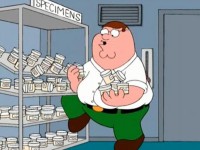Children conceived through sperm donation have a birth defect rate of almost a fifth compared with the general population. This may be explained by the fact that sperm banks only accept donors who have good semen quality, and because of the rigorous screening procedures which they adopt.In addition, sperm banks may try to ensure that the sperm used in a particular recipient woman comes from a donor whose blood group and genetic profile is compatible with those of the woman.
Sperm donation is also used in cases of rhesus incompatibility. This particularly occurs where a woman is rhesus negative, and her partner is rhesus positive. The woman’s body may reject a fetus if it has rhesus positive blood. Anti D injections have been developed and may be used to attempt to avoid this, and these are usually automatically given to rhesus negative women immediately after they give birth to their first child. However, in the past this was either not possible or was not always routinely undertaken where a woman had gave birth or had an abortion and she may have trouble carrying a child later in life. Furthermore, for some women, the anti D injection does not provide the entire solution, particularly where there is a medical history of complications during pregnancy which risk the woman’s blood and that of the fetus becoming mixed. In such cases, sperm from a rhesus negative donor can provide the solution and a woman may be able to conceive and carry a pregnancy to full term when otherwise this would not be possible. For this reason, sperm from rhesus negative sperm donors is often in great demand, particularly those with the O negative blood group who are universal donors.

